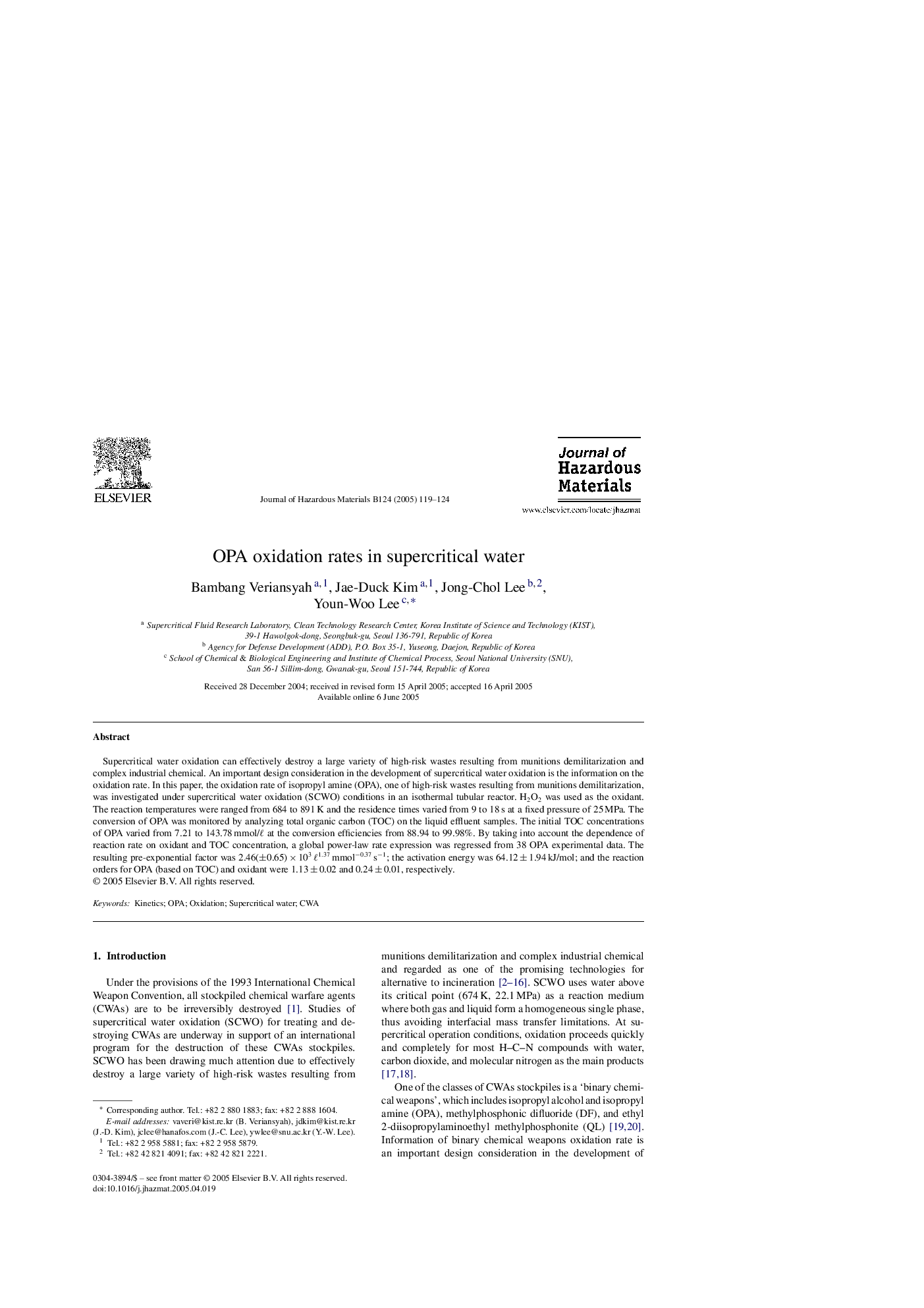| Article ID | Journal | Published Year | Pages | File Type |
|---|---|---|---|---|
| 9674169 | Journal of Hazardous Materials | 2005 | 6 Pages |
Abstract
Supercritical water oxidation can effectively destroy a large variety of high-risk wastes resulting from munitions demilitarization and complex industrial chemical. An important design consideration in the development of supercritical water oxidation is the information on the oxidation rate. In this paper, the oxidation rate of isopropyl amine (OPA), one of high-risk wastes resulting from munitions demilitarization, was investigated under supercritical water oxidation (SCWO) conditions in an isothermal tubular reactor. H2O2 was used as the oxidant. The reaction temperatures were ranged from 684 to 891 K and the residence times varied from 9 to 18 s at a fixed pressure of 25 MPa. The conversion of OPA was monitored by analyzing total organic carbon (TOC) on the liquid effluent samples. The initial TOC concentrations of OPA varied from 7.21 to 143.78 mmol/â at the conversion efficiencies from 88.94 to 99.98%. By taking into account the dependence of reaction rate on oxidant and TOC concentration, a global power-law rate expression was regressed from 38 OPA experimental data. The resulting pre-exponential factor was 2.46(±0.65) Ã 103 â1.37 mmolâ0.37 sâ1; the activation energy was 64.12 ± 1.94 kJ/mol; and the reaction orders for OPA (based on TOC) and oxidant were 1.13 ± 0.02 and 0.24 ± 0.01, respectively.
Related Topics
Physical Sciences and Engineering
Chemical Engineering
Chemical Health and Safety
Authors
Bambang Veriansyah, Jae-Duck Kim, Jong-Chol Lee, Youn-Woo Lee,
